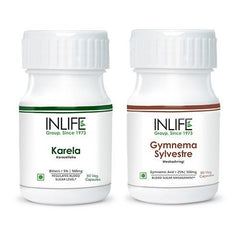
Image Source - ICAR
Camel milk has been the primary type of milk consumed by many Bedouin cultures for generations. Dates and camel milk have been the staple foods for the Bedouin Arabs for centuries. In the harsh and arid desert country, camel milk not just replaces water in their diet, but also provide the essential nutrients. Although camel milk is not in nearly as high supply as cow milk, it has a number of clear advantages over that more common form, including more powerful nutrients and better chemical compounds, given the undeniable health benefits of camel milk as compared to more traditional forms of milk, there has been a major increase in camel milk farming. However, it is extremely expensive to harvest camel milk, approximately fifty times more expensive than cow milk, which makes it considerably more expensive. Camel milk is the closest form of milk that we have access to besides human milk, which means that it gives us an ideal nutritive mixture, with far better benefits for our body than our more common alternatives. Take a more detailed look at some of the other health benefits of camel milk.
- Diabetes Treatment
Camel milk has a wealth of nutrients, including insulin, which is an essential component of human health. Insulin and glucose balance is very important for the prevention of diabetes, making camel milk a potential natural solution for diabetes, eliminating the need for insulin injections if a steady stream of camel milk is included in the diet. If used as a preventative measure, camel milk can also prevent you from developing the disease in the first place.
- Immune System
There is a surprisingly high level of proteins and other organic compounds in camel milk, some of which have powerful antimicrobial abilities. This means that camel milk can help to boost the immune system and keep us healthy from the inside out.
- Growth and Development
The high level of animal proteins found in camel milk, many of which are not found in goat and cow milk, can help to stimulate proper growth and development of bones and organ systems. Protein is one of the most basic building blocks of life, and camel milk provides a lot of it. In fact, in many cultures, camel milk is given to malnourished infants and children, as it can improve health and wellness so dramatically. Camel milk was first used as a way to prolong journeys through the desert, when food and other chances for liquid were limited.
- Stimulate Circulation: The high iron content found in camel milk makes it ideal for preventing anemia. Iron is a crucial component of red blood cells, which means that camel milk can increase circulation of the blood and oxygenation of the body’s organ systems and extremities. Following childbirth, injury, or period of malnutrition, camel milk can significantly help maintain health.
- Allergic Reactions
Camel milk has been connected to reducing allergic reactions in those who regularly consume it. Furthermore, camel milk does not cause the same sorts of lactose intolerance reactions of cow milk, as it has a significantly different chemical makeup.
- Heart Health
With such a healthy and comprehensive set of fatty acids, camel milk can greatly improve the balance of cholesterol in the body. By reducing ‘bad’ cholesterol in the body, camel milk helps to reduce atherosclerosis, heart attacks, and strokes, and even lowers blood pressure in regular users.
- Anti-aging
Alpha-hydroxyl acid that is present in camel milk help smooths fine lines and make your skin seem firmer and younger. It is also known to protect from the harmful rays of sun too which lead to serious skin problems apart from aging.
Camel milk is a more environmentally friendly way of obtaining milk, as camel’s do not need the massive amounts of grazing area like goats and cows, thereby leaving the world a bit greener, and filled with less methane gas. There are no known side effects or dangers of consuming camel milk, including many of the health issues that can be caused by cows and goats.



